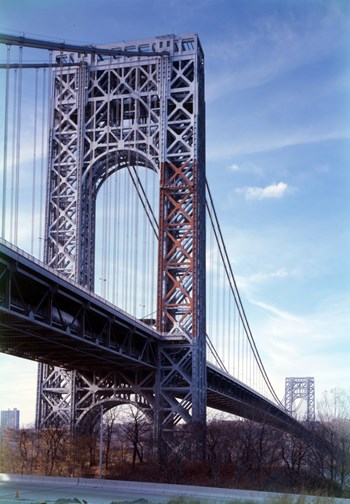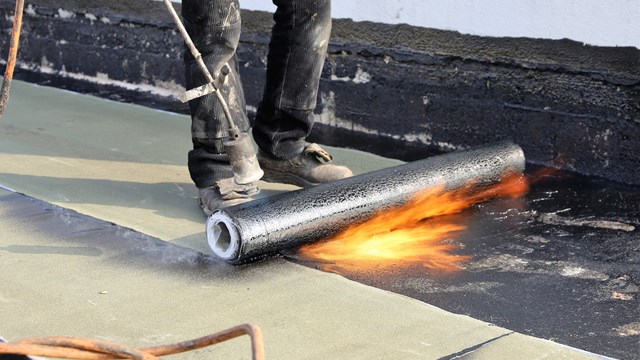
Mention Fort Lee, New Jersey and two things come to mind. One is its proximity to the George Washington Bridge, and secondly, its heritage as the birthplace of the modern film industry and of the Palisades amusement park.
The borough of Fort Lee is located in Bergen County in northeastern New Jersey. Nestled between Leonia and Palisades Park, you’ll find yourself on the banks of the Hudson River, one bridge (the George Washington, to be exact) away from New York City—and home to Fort Lee.
Fort Lee History 101
According to the borough’s website, the first people known to have settled in the Fort Lee area were the Lenni Lenape Indians. The first recorded reference to the area atop the Palisades which is now Fort Lee was by Captain Henry Hudson in 1609. In 1664, the British gained control of the Dutch lands in New Jersey and New York. Nearly a century later in 1756, Stephen Bourdette purchased 400 acres of wooded land north of present-day Edgewater; meaning that present-day Fort Lee was actually part of his property. The stone house he built was the only one for nearly a mile around and this same edifice later became General George Washington’s headquarters during the American Revolution.
Fort Lee’s role in the Revolutionary War is noteworthy as it was a crucial strategic location during the 1776 British campaign to control New York City and the Hudson River. After the siege of Boston, Washington fortified his defenses in New York and the Hudson Valley. The British plan was to control the length of the Hudson with the dominance of its Royal Navy. The plan, if successful, would have split the colonies in half and hopefully bring an early end to the war. In July of 1776, work was begun on a fort that would eventually be named for General Charles Lee, who assisted in the defense of New York City. On the opposite New York shoreline, Fort Washington was built.
Following the fall of New York to the British occupation, the Continental Army crossed the Hudson River and scaled the Palisades to man the fortifications on the bluffs of Fort Lee. Washington designated the area of what is now Monument Park and the Fort Lee Museum as an encampment for his troops, the borough’s website noted. Huts were constructed around Parker’s Pond and ovens carved of stone. However, with the war in New York going badly, Washington soon abandoned the fort and made preparations to evacuate his remaining army through New Jersey.
Say Hello to Hollywood East
In its early years, Fort Lee hummed along as a largely agricultural town across the river far from the buzz of New York City. Then, in the early part of the 20th century, a new industry began to take root in Fort Lee, thanks in part to celebrated inventor Thomas Alva Edison, who in 1907 used the Palisades cliffs for the exterior shots in an early silent film called Rescued from an Eagle’s Nest. This kicked off a filmmaking boom in the little town when pioneering film studios began scouting new locations and found that Fort Lee and its surrounds could serve as everything from a fort (for obvious reasons) to an Old West town.
By 1915, Fort Lee was home to more than half a dozen film studios, producing everything from shoot-em-ups to war dramas to slapstick comedy shorts. According to the Fort Lee Film Commission, the Marx Brothers shot their first film in Fort Lee, and the town was the site of many of the first “talkie” motion pictures, as well as the first broadcast television image. The area became so synonymous with the budding film industry, in fact, that the term “cliffhanger” was coined to refer to the many thrillers set on the Palisades cliffs. Several television shows and movies still use borough locations for shoots. Director Martin Scorsese shot several scenes of the movie Goodfellas in Fort Lee.
Another image synonymous with the town is the George Washington Bridge, which was designed by Swiss-American engineer Othmar H. Ammann and completed in 1927. By 1962, the George Washington Bridge became one of the world’s busiest bridges and the only 14-lane suspension bridge in existence. The bridge was designated a National Historic Civil Engineering Landmark in 1981.
Fun in Palisades Park
While the film industry was setting up shop in Fort Lee, another form of entertainment was already going strong. Founded by a trolley company in the late 1800’s, Palisades Amusement Park featured dozens of carousels, Ferris wheels, roller-coasters, and a Midway full of games of skill, that drew visitors from all over the region. Folks who were lucky enough to visit the park in their childhood remember not just the rides, but the food—particularly the French fries, which were prepared according to the “secret” Palisades Park recipe. (The secret was really pretty simple: raw potato wedges were stored in a mixture of water and malt vinegar, then fried twice to make them crispy on the outside and moist on the inside. Do-it-yourself instructions can be found at www.palisadespark.com.)
By the mid-1960’s, the park was one of the busiest amusement parks in the country, and despite the brisk business it did, the crowding and traffic problems began to wear out Palisades’ welcome in Fort Lee and the neighboring town of Cliffside Park. In 1967, the towns rezoned the amusement park’s land for residential development, and within a couple of years, the park had been sold. Palisades Park closed its gates forever in 1971, and today, high-rise co-op buildings like well-known Horizon House stand where people of a bygone era strolled and played.
A Cooperative Community
Speaking of Horizon House, a large cluster of cooperative housing has established itself in Fort Lee. In fact, Fort Lee has the majority of cooperative housing in the Garden State, accounting for some 6,500 units. Horizon House is one of the largest complexes with 1,266 units spread out campus-like a mile south of the bridge.
A search of realtor listings finds housing prices range from around $100,000 for a one-bedroom and $200,000 for a two-bedroom co-op or condo unit all the way up to $2 million-plus for luxury penthouses and sprawling townhomes.
With its slightly more reasonable property costs, Fort Lee’s appeal to many is that while it’s removed from a lot of the noise and crowds across the river, the bright lights of Manhattan are still just a short trip away.
Debra A. Estock is managing editor of The New Jersey Cooperator. Freelance writer Rebecca Fons contributed to this article.






Leave a Comment